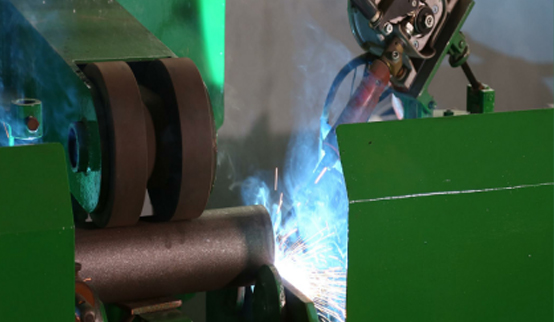 Afrikaans
Afrikaans  Albanian
Albanian  Amharic
Amharic  Arabic
Arabic  Armenian
Armenian  Azerbaijani
Azerbaijani  Basque
Basque  Belarusian
Belarusian  Bengali
Bengali  Bosnian
Bosnian  Bulgarian
Bulgarian  Catalan
Catalan  Cebuano
Cebuano  Corsican
Corsican  Croatian
Croatian  Czech
Czech  Danish
Danish  Dutch
Dutch  English
English  Esperanto
Esperanto  Estonian
Estonian  Finnish
Finnish  French
French  Frisian
Frisian  Galician
Galician  Georgian
Georgian  German
German  Greek
Greek  Gujarati
Gujarati  Haitian Creole
Haitian Creole  hausa
hausa  hawaiian
hawaiian  Hebrew
Hebrew  Hindi
Hindi  Miao
Miao  Hungarian
Hungarian  Icelandic
Icelandic  igbo
igbo  Indonesian
Indonesian  irish
irish  Italian
Italian  Japanese
Japanese  Javanese
Javanese  Kannada
Kannada  kazakh
kazakh  Khmer
Khmer  Rwandese
Rwandese  Korean
Korean  Kurdish
Kurdish  Kyrgyz
Kyrgyz  Lao
Lao  Latin
Latin  Latvian
Latvian  Lithuanian
Lithuanian  Luxembourgish
Luxembourgish  Macedonian
Macedonian  Malgashi
Malgashi  Malay
Malay  Malayalam
Malayalam  Maltese
Maltese  Maori
Maori  Marathi
Marathi  Mongolian
Mongolian  Myanmar
Myanmar  Nepali
Nepali  Norwegian
Norwegian  Norwegian
Norwegian  Occitan
Occitan  Pashto
Pashto  Persian
Persian  Polish
Polish  Portuguese
Portuguese  Punjabi
Punjabi  Romanian
Romanian  Russian
Russian  Samoan
Samoan  Scottish Gaelic
Scottish Gaelic  Serbian
Serbian  Sesotho
Sesotho  Shona
Shona  Sindhi
Sindhi  Sinhala
Sinhala  Slovak
Slovak  Slovenian
Slovenian  Somali
Somali  Spanish
Spanish  Sundanese
Sundanese  Swahili
Swahili  Swedish
Swedish  Tagalog
Tagalog  Tajik
Tajik  Tamil
Tamil  Tatar
Tatar  Telugu
Telugu  Thai
Thai  Turkish
Turkish  Turkmen
Turkmen  Ukrainian
Ukrainian  Urdu
Urdu  Uighur
Uighur  Uzbek
Uzbek  Vietnamese
Vietnamese  Welsh
Welsh  Bantu
Bantu  Yiddish
Yiddish  Yoruba
Yoruba  Zulu
Zulu rubber belt pulley
Understanding Rubber Belt Pulleys An Essential Component for Power Transmission
Rubber belt pulleys play a critical role in various mechanical systems, providing a reliable method for power transmission in numerous industrial and commercial applications. These components are widely used in machines ranging from conveyor systems in factories to agricultural equipment and automotive systems. Understanding the functionality, benefits, and maintenance of rubber belt pulleys is essential for anyone involved in engineering or machinery design.
At its core, a rubber belt pulley is designed to transfer mechanical power between two shafts using a flexible rubber belt. This design allows for the efficient transfer of energy by reducing slippage between the belt and the pulley surface. Typically, rubber belts are favored over metal counterparts due to their superior grip, flexibility, and noise-dampening properties. This makes rubber belt pulleys ideal for systems where loud operations can be disruptive.
The primary advantage of rubber belt pulleys lies in their ability to absorb shock and vibrations. In any mechanical system, sudden changes in load can lead to significant stress on components, potentially causing damage over time. The elasticity of rubber helps to mitigate these forces, enhancing the longevity and reliability of machinery. Furthermore, the smooth operation of rubber belts reduces wear and tear, leading to decreased maintenance costs and increased uptime.
rubber belt pulley

Installation and maintenance of rubber belt pulleys are straightforward, making them a popular choice among engineers and maintenance professionals. Proper alignment of the pulleys and tensioning of the belt are essential for optimal performance. Regular inspections can help identify wear and tear, ensuring that the system remains functional over time. In most cases, replacing a worn-out belt is a simple task that can significantly extend the pulley’s lifecycle.
Applications for rubber belt pulleys are vast and varied. In manufacturing, they’re commonly used in conveyor systems to move products along assembly lines. In automotive applications, they play an essential role in driving various engine components, such as alternators and water pumps. Additionally, they are found in agricultural machinery, contributing to the efficient operation of equipment like harvesters and tractors.
In conclusion, rubber belt pulleys are indispensable components in modern machinery. Their ability to provide smooth and efficient power transmission, combined with their durability and ease of maintenance, makes them a preferred choice in numerous applications. Understanding the importance of these pulleys can lead to better design and maintenance practices, ultimately improving overall system performance and reliability. Whether in industry or agriculture, rubber belt pulleys continue to be a cornerstone of effective mechanical design.
-
Revolutionizing Conveyor Reliability with Advanced Rubber Lagging PulleysNewsJul.22,2025
-
Powering Precision and Durability with Expert Manufacturers of Conveyor ComponentsNewsJul.22,2025
-
Optimizing Conveyor Systems with Advanced Conveyor AccessoriesNewsJul.22,2025
-
Maximize Conveyor Efficiency with Quality Conveyor Idler PulleysNewsJul.22,2025
-
Future-Proof Your Conveyor System with High-Performance Polyurethane RollerNewsJul.22,2025
-
Driving Efficiency Forward with Quality Idlers and RollersNewsJul.22,2025





























